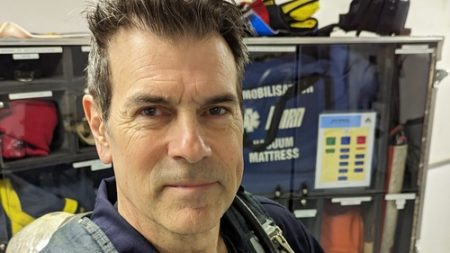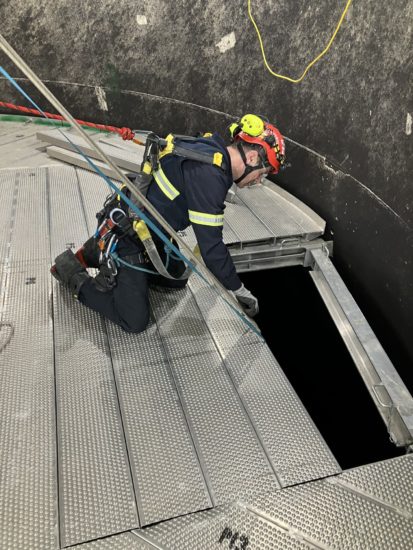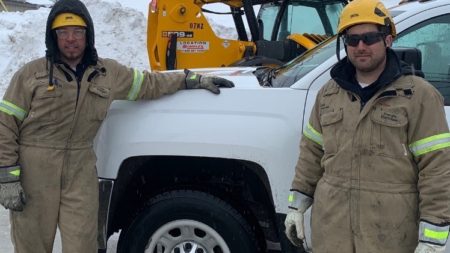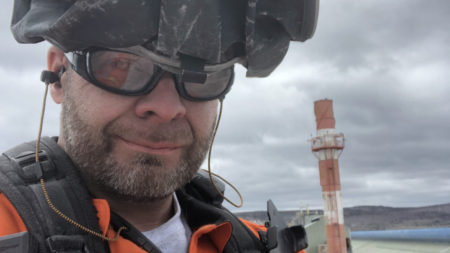Michel Tremblay: a Trainer with Enthusiasm

Michel Tremblay, formateur de sauvetage en espaces clos et en hauteur à Énergie Électrique.
Michel Tremblay, Confined-Space and Working-at-Height Rescue Trainer, has been teaching rescue at Power Operations for 18 years and knows how to make the material engaging. Listening to him talk about his experiences on the job over the past few years, it is clear that he is deeply motivated by what he does. “Everything I do, I do out of passion,” he says.
Michel Tremblay joined Rio Tinto in 1990 as an industrial mechanic and later became a trainer for mobile equipment (overhead cranes, cradles, forklifts, etc.). This was the first step on a path that would prove very rewarding, both professionally and personally.
In the early 2000s, when new standards were introduced for managing work in confined spaces, Tremblay seized the opportunity to specialise in all aspects of rescue operations at Power Operations.
“The managers at the time wanted to have an in-house trainer who knew the place, the standards and the people. Since I was already a trainer and a rescuer, and since I was interested and keen, I was given the job,” he says with his customary enthusiasm.
In 2001, Tremblay completed a wide range of training, including in mine, sea and ice rescue, and became a certified medical first responder. The acquisition of all this knowledge allowed him to develop a broader vision of rescue operations.
“I love the challenge and complexity of rescue situations, and I like having to provide a solution,” he says. “At Power Operations alone, there are 1,130 confined spaces for which there are proven rescue procedures—and every one of them had to be tested.”
Tremblay is happy to share his knowledge and describes himself as an open book: “I’m responsible for keeping the technical skills of 120 rescuers up to date each year. This includes testing for air and gases and using self-contained breathing apparatus. Never before has there been so much interest in rescue skills training. The new mechanics, electricians and welders are a breath of fresh air. They are excited, enthusiastic and eager to learn.”
Tremblay is committed to everything he does. To immerse the rescuers in a learning situation, he uses his acting skills to recreate a rescue scenario that is as close to real life as possible. The experience leaves a lasting impression on all involved.
“Seeing people come out bright-eyed and high-fiving after sweating and experiencing intense emotions—that’s my reward! At the end of a day like this, if someone doesn’t have what it takes to be a rescuer, they know it,” says Tremblay. “You have to be able to keep your cool. That’s the most important thing. Then, you have to be able to communicate effectively with your fellow rescuers, and you have to be physically fit. You also need to have an analytical mind, be practical and know your equipment. These are skills that you develop through exposure. Me, I do this all year round.”

An adventurous soul
Rescue has become a way of life for Tremblay. For the past nine years, he has pursued his interest in wilderness survival and maintains the blog Survie Boréale, where he shares his adventures (including a recent seven-day survival trip in the forest without food or water), as well as tutorials and practical knowledge. And although he has written and published three books, he prefers to address his community of around 6,000 Facebook subscribers through videos.
Tremblay says that he likes to challenge himself and take calculated risks. In recent years, he has given talks at several Rio Tinto facilities.
Follow his adventures at survieboreale.com or on his Facebook, Instagram and YouTube pages.


